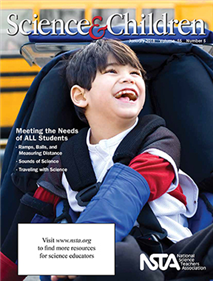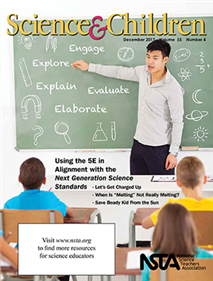All Teaching Strategies resources
Journal Article
The Early Years: An Activity for Every Child
This column discusses resources and science topics related to students in grades preK to 2. This month’s issue has students developing a seed-planting activity that allows all children to actively participate and document their understanding of see...
Journal Article
The Poetry of Science: Seeing Clearly
Building literacy in playful, meaningful ways to learn about vision correction....
Journal Article
Methods and Strategies: Teaching the Nature of Science to Elementary Students
This column provides ideas and techniques to enhance your science teaching. This month’s issue shares activities so that elementary students can learn about Nature of Science. When effectively integrated into inquiry investigations through proper s...
NSTA Press Book
Wind Energy, Grade 5: STEM Road Map for Elementary School
What if you could challenge your fifth graders to develop an economical, eco-friendly wind farm? With this volume in the STEM Road Map Curriculum Series, you can! Wind Energy outlines a journey that will steer your students toward authentic probl...
Journal Article
The Early Years: Using the 5Es to Teach Seasonal Changes
Learn how to use a thermometer to investigate and document seasonal changes in the local environment....
Journal Article
The Poetry of Science: Learning About Trees With the 5Es
Building literacy in playful, meaningful ways. Students learn about crossdating tree-ring samples....




